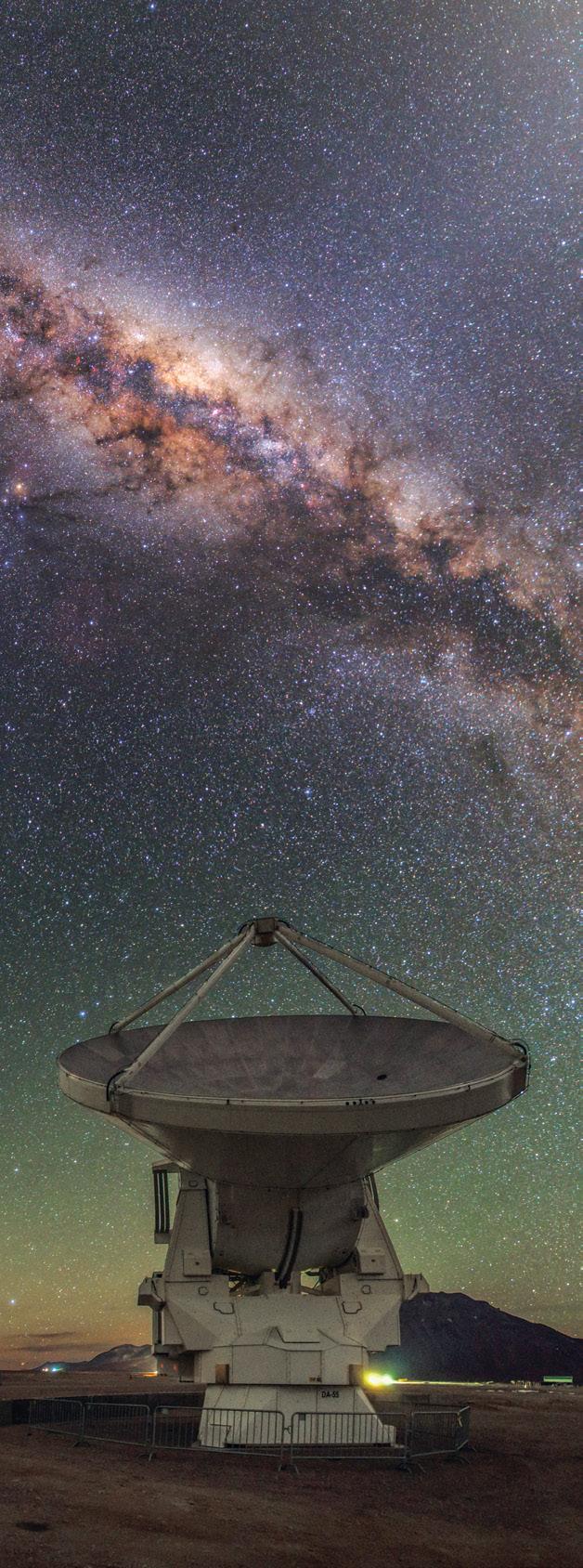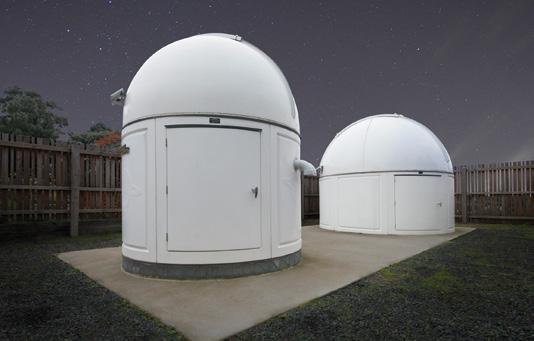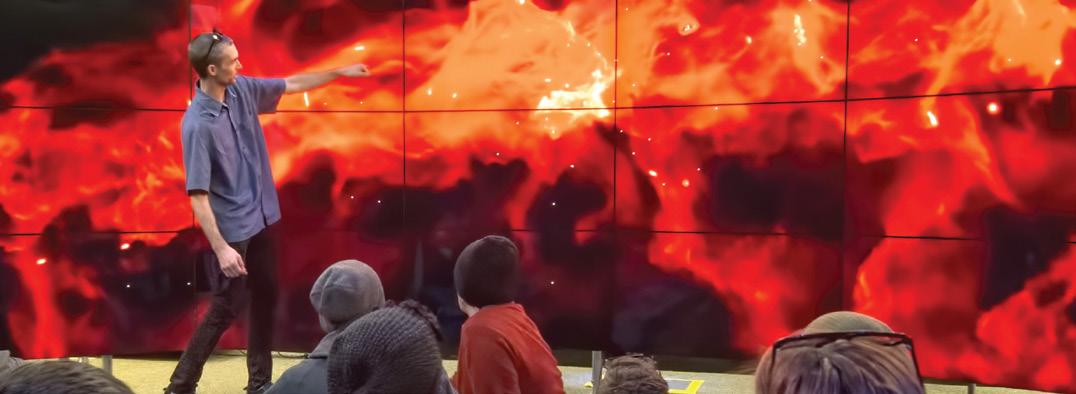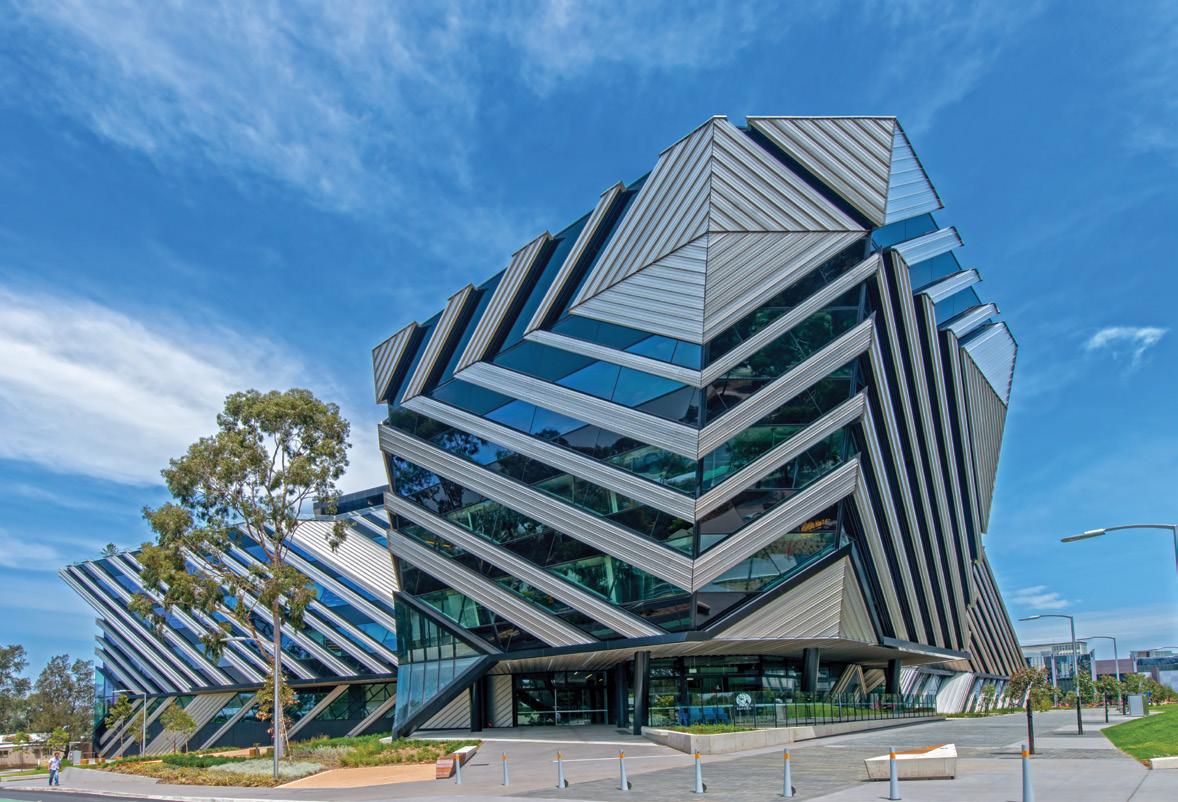MONASH MASTER OF SCIENCE IN ASTROPHYSICS
 monash.edu/physics
monash.edu/physics

 monash.edu/physics
monash.edu/physics
When you join Monash you will have access to world class researchers and facilities; you will be part of an outstanding research culture, which will support your career aspirations.
In 2022 the School of Physics and Astronomy at Monash was ranked in the top 100 in the world - based on all major rankings (i.e., ARWU, QS and THE). In the most recent national audit of research excellence (ERA 2018), the School received the highest rating of 5 (well above world standard) for all its research programmes, an overall rating of 5 and the highest rating for the impact of our research.
Our two year MSc programme comprises advanced coursework, chosen from a wide range of topics, and a major research project (carried out over two years) leading to a thesis in: observational astronomy, computational astrophysics, experimental physics, computational physics or theoretical physics.
Graduates with a master’s degree in astrophysics are skilled in: empirical reasoning using big data, coding and AI/machine learning, computational and theoretical modelling, creative problem-solving, analytical thinking and scientific communication. Our graduates also have demonstrable research achievements, with their work being published in high impact journals.
A list of current research projects can be found at: 8 monash.edu/science/schools/physics/honours/honoursproject/example-honours-project

The skills you acquire in the MSc programme are highly sought-after by employers and are applicable to a broad range of careers. Astrophysicists use their knowledge in:
• Managing astronomical observatories

• Medical imaging
• Climate modelling
• Development of scientific instrumentation
• R&D management
• Big data analytics & visualisation
• The energy sector
• Science communication
• Banking, finance and patent law.
Consequently, our graduates find employment in industry, scientific institutes, hospitals and government organisations.
A master’s degree from Monash also equips you to proceed to a research Doctorate.
Astrophysicist Paul Lasky discusses the first detection of gravitational waves from the inspiral of two neutron stars. This discovery, known as GW170817, in which Monash played a key role, was the first time astronomers were able to observe gravitational waves accompanied by radiation across all wavelengths in the electromagnetic spectrum.
Astrophysics explores the structure and evolution of Universe over cosmic timescales - from its birth in the Big Bang to the current epoch of its accelerating expansion. Our specialised degreethe Master of Science in Astrophysics - allows you to follow your passion for understanding the cosmos. It will provide you with high level training and the research skills necessary to navigate a complex and rapidly changing technological world.
YEAR 1
Six coursework units and a research project leading to an Interim Report.
Coursework units can be chosen from:
● Computational Astrophysics (compulsory)
● Advanced Observational Astronomy

● Stellar Astrophysics I
● Stellar Astrophysics IIChemical Evolution of the Elements
● General Relativity & Cosmology
● Dynamics of Exoplanets
● Data Analysis & Machine Learning
● Quantum Mechanics
● Electrodynamics & Classical Field Theory
● Statistical Mechanics
● Condensed Matter Physics
● Introduction to Nanophotonics & Meta-optics

● X-ray Optics & Synchrotron Science
● Quantum Information Theory
● Quantum Field Theory
YEAR 2
Six advanced coursework units and a research project leading to an MSc thesis. Coursework units can be chosen from:
● High Energy Astrophysics

● Advanced General Relativity
● Radiation Astrophysics
● Order of Magnitude Astrophysics
● Magnetohydrodynamics
● Special Topics in Contemporary Astrophysics
● Advanced Quantum Mechanics
● Quantum Fluids & Many-body Theory
● Advanced Quantum Field Theory
● Statistical Field Theory - Critical Phenomena & the Renormalisation Group
● Topics in Advanced Condensed Matter Physics
● Special Topics in Contemporary Physics
● Additional topics may be chosen in advanced mathematics.
Part A -Advanced Studies | Part B -Research Project | Part C -Extended Technical Studies | Part D -Advanced Research Project
YEAR 1 Semester 1
Astrophysics Coursework A (12 Points) ASP4020
An undergraduate degree (equivalent to an Australian undergraduate degree) with a major in astronomy, astrophysics or a related discipline, with at least a 65% average, OR qualifications/experience that the Faculty of Science considers to be equivalent. 96 points to complete 2 4 Entry Level 2
Domestic students: 8 monash.edu/study/courses/find-a-course/2023/science-s6000?domestic=true#application-fees International students: 8 monash.edu/study/courses/find-a-course/2023/science-s6000?international=true#application-fees
Master’s students are allocated dedicated office space in the $175M New Horizons Research Centre, where you will have access to state-of-the art research laboratories.
You will be provided with your own high-end computer and have direct access to high performance computing, 2D/3D visualisation facilities and technical support.
You will have the opportunity to interact with our world-class researchers, and the many international scientists who visit the School, including attending more than 90 research seminars, colloquia and workshops that the School runs each year.
The School is involved in major research centres, including:
• ARC Centre of Excellence in Future Low Energy Electronics Technologies (FLEET)
• ARC Centre of Excellence for Gravitational Wave Discovery (OzGrav)
• ARC Centre of Excellence in All Sky Astrophysics in 3D (ASTRO3D)

• Monash Centre for Atomically Thin Materials
• Monash Centre for Electron Microscopy

• Monash-Warwick Alliance in High Energy Particle Physics
The School also has access to many national and international research facilities, including: the Australian Synchrotron (located opposite Monash); international synchrotron facilities in Japan (SPring-8), Europe (ESRF) and the United States (ALS); the Large Hadron Collider (LHC) at CERN; the Melbourne Centre for Nanofabrication (located opposite Monash); neutron scattering facilities at ANSTO; Advanced LIGO in the United States; the European Southern Observatory (ESO); ALMA and the Joint Institute for Nuclear Astrophysics, to name but a few key partnerships.
The Gravitational-wave Optical Transient Observatory (GOTO) is an array of telescopes located at La Palma in the Canary Islands. GOTO is a joint research project between Monash University and the University of Warwick (UK). The purpose of GOTO is look for optical counterparts to gravitational wave events created by extreme phenomena in the Universe, such as binary neutron stars mergers (Credit: Dr Krzysztof Ulaczyk). For more details see: https://goto-observatory.orgMONASH UNIVERSITY monash.edu
FIND A COURSE monash.edu/physics






FUTURE STUDENT ENQUIRIES Australian citizens, permanent residents and New Zealand citizens monash.edu/study/contact
International students
T Australia freecall: 1800 MONASH (666 274) T +61 3 9903 4788 (outside Australia) E study@monash.edu Wechat: MonashUniAus Youku: Monash 蒙纳士大学
